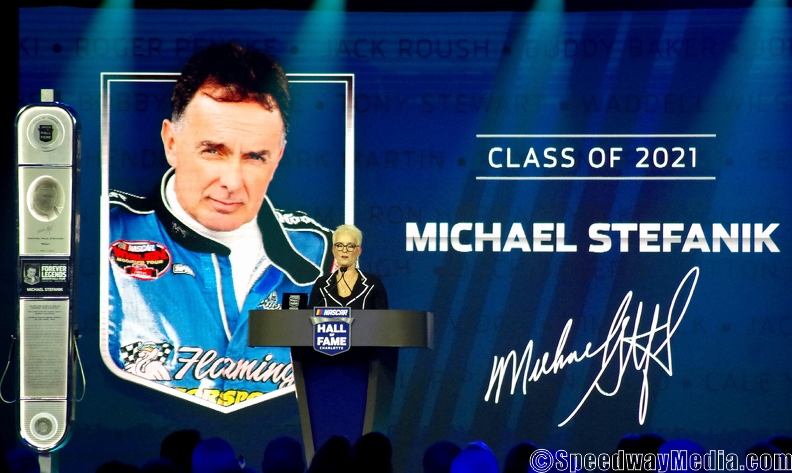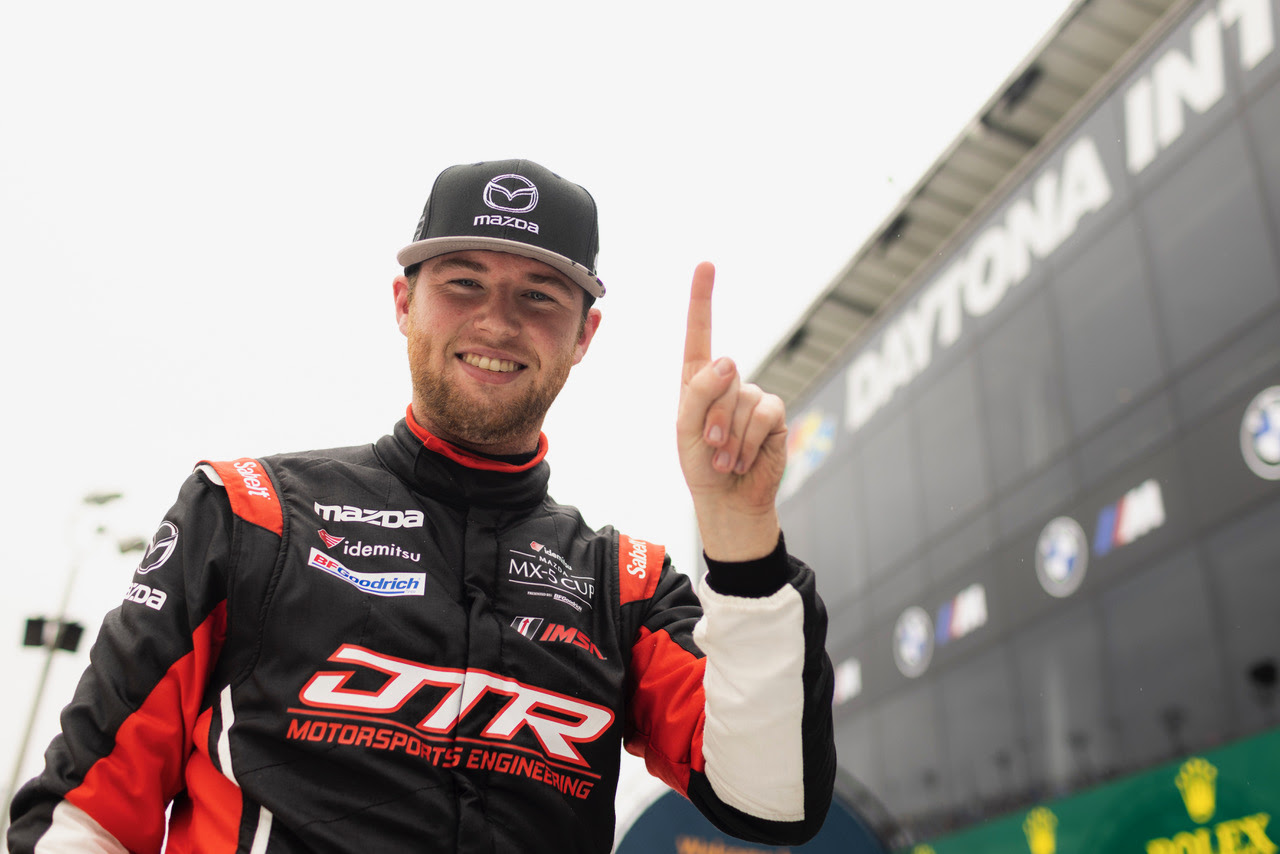In this edition of ‘First Seasons,’ Speedway Media catches up with James Hinchcliffe who recently competed for Andretti Autosport and will be calling races for NBC Sports in 2022. We will take a look back at his first year in racing and his early years of being in the sport.
During the interview, Hinchcliffe discusses what it was like getting a late start entering the sport, his first race at Birmingham, winning his first race at St. Petersburg, returning to Indy the year after his crash and many other facets of his career.
SM: Following your two years in the Indy Lights racing series from 2009 through 2010, you made the move to the IndyCar Series at the age of 24 competing in 16 of the 17 races. How did you make the move to the IndyCar Series after competing with Sam Schmidt and Mark Moore in Indy Lights and racing for Newman-Haas? Did you feel it was the right age to make your first Indy start?
JH: “It’s a very interesting question, certainly a bit later than what these kids are doing nowadays,” Hinchcliffe said about making his debut. “In a lot of ways, I was told by a lot of the engineers at Newman-Haas that my maturity served me quite well, despite having few IndyCar starts. I think I came with a lot of experience and maturity that they (Newman-Haas) haven’t seen from other rookies.
“Moving to IndyCar with them was such an incredible opportunity, especially a team of that pedigree as a rookie. For me, it was a dream scenario. The only thing I wish we would’ve been able to do was keep going after 2011. The team obviously shut down at the end of the year. I was proud to deliver them their last title, which was winning Rookie of the Year.”
Do you remember when you had your first conversation with Newman-Haas that led to getting a ride in 2011?
JH: “The conversation came after my 2010 Indy Lights season,” he said. “We got a phone call from Newman-Haas to go test with them. They said, myself, J.K. Vernay (former Indy driver) but they wanted a rookie to be Oriol Servia’s teammate. So, they organized a two-day test at Sebring and by the end of the test, I was a tenth of a second quicker than Oriol. That eventually led to my first offer.”
SM: What was it like going down to Sebring for the first time and being in an IndyCar? Was that surreal for you?
JH: “It really was,” Hinchcliffe said about making his first laps in an IndyCar. “My dad and I flew down and it had been him and I since we were nine years old. It was kind of a cool moment. However, there was a tremendous amount of pressure. For the past 15 years everything, just kind of built up to that moment and you had to deliver. This was a great opportunity at the time. To go execute on the day, that was a great moment between my dad and I.”
SM: As you were entering your first season, how did you manage expectations as a rookie driver? Was winning races or championships on your mind, or were you thinking more like ‘Let’s take this race by race and see where we end up at the halfway point, and then look ahead to the rest of the season?’
JH: “It’s kind of funny actually,” the Toronto native said about managing expectations as a rookie. “The kids who come into today’s sport say they are going to win races and such, but for me, I was not that driver. I thought to myself, ‘Look man. You go into every junior category year as one of the two to three drivers who have a realistic shot at the championship.’ When you get to the top and you think you’re going to beat Dario Franchitti and Scott Dixon, Tony Kanaan, Ryan Hunter-Reay, that was an outrageous thought for me. I still couldn’t believe I was on the same grid with these guys.
“Honestly, what was so cool about that was it made me a lot calmer, and I took a lot of pressure off myself. I’m a rookie and it’s okay to learn, it’s okay to make mistakes. I didn’t drive with that pressure on me. In my first race, I qualified next to Dario Franchitti and I thought this was okay. In our second race, we finished fourth at Long Beach. So, we had some good results very early.”
SM: Obviously, you had experience at some of the tracks the year before, but driving an IndyCar is an entirely different animal. What do you remember about the weeks leading up to Birmingham? Were you anxious, nervous, or was it more a feeling of, ‘Let’s get this going?’
JH: “I felt all of those things (nervous, anxious, pressure), but the pressure was off a little bit,” Hinchcliffe said about making his debut. “Making my debut was a huge amount of relief. We missed the first race at St. Pete because we didn’t have sponsorship yet. During the St. Pete weekend, I was down there with the team and helping Oriol. We got a phone call Saturday night from a company we had been talking to and they wanted to be with us starting next week.
“It was a roller coaster of emotions leading up to that first start. I remember during the first two years, I was walking up to the grid and I had a hard card and I would just be there to be seen. I’ll never forget at Birmingham, they (IndyCar officials) called all non-essential personnel off the grid. Then I said, ‘Oh no dummy. You stay here, you get to do this.’ It was definitely a roller coaster.”
SM: In your first outing, you had a decent qualifying position of eighth but unfortunately your day ended early due to a crash on Lap 40 and you finished 24th. Discuss what you recall about the event and is there anything you think you could have done differently to avoid a crash with E.J. Viso and Simona de Silvestro?
JH: “No, unfortunately, it was one of those deals where E.J. got into an incident with somebody and he spun around, and I was forced to go around the outside of him. When he did that, E.J. left his foot off the brake and I ran into the back of him,” he said. “Unfortunately, that was just disappointing to not finish in your first race after all that potential, but it goes with the sport.”
SM: Despite the disappointing finish, were you still on a high after completing your first IndyCar race?
JH: “No, the end of that race was super depressing,” Hinchcliffe said. “You really want to finish your first one, I don’t like ruining equipment. I felt bad for the crew guys. I was standing around the car when I got back to the trailer and I just felt bad for breaking the car. Crash damage is your responsibility as a driver, but thankfully the accident wasn’t of our doing.”
SM: At the following race in Long Beach, you scored a fourth-place finish and would also finish fourth at Loudon and Kentucky. Along the way, you had finishes of 20th and 19th at Texas, 14th st Toronto and finished 20th at Mid-Ohio. Was there a learning curve for you throughout the season or was there a point when you ever got comfortable?
JH: “I think learning the flow of a race weekend was a big thing, learning the car was definitely a big thing too,” he said. “I really can’t speak of the transition of the new Indy Lights car to the new IndyCar, but I did think the old Lights car was a very good training tool and stepping stone for the old IndyCar. There are a lot of things to get used to. Understanding red tires versus black tires, qualifying format, long races, saving fuel, etc. I really just tried to learn in every practice session and be a little better.”
SM: Your first Indianapolis experience came in 2009 with Sam Schmidt, but your first Indy 500 start came in your rookie season in 2011. You qualified 13th and finished 29th due to a crash. With the exception of the crash how surreal was it to make your first Indy 500 start in the IndyCar Series? How were your emotions making your first practice run, your qualifying attempt and the pre-race ceremonies?
JH: “It was amazing,” the six time IndyCar winner said. “I had watched the Indy 500 for years as a kid growing up. I attended my first Indy 500 in 2008 as a fan and I thought, TV doesn’t do this thing justice. In 2009 and 2010, when you were a part of the show, I thought okay, now I get it a little bit. In 2011, it really hit me now that I was actually a part of the race.
“The race is so unique. The first practice runs are nerve wracking. Qualifying at Indy is always the scariest thing you do all year. We were very proud of our qualifying effort of 13th. The disappointing finish that day sat heavier than any other race, because so much goes into that race. The emotions around the race are so drastic. Overall, my first Month of May was incredible.”
SM: As for your rookie year, you finished 12th in the standings and had an average finish of 13.9. In 2012, you obtained your first podium finish at Long Beach for Andretti Autosport. How special was it to get your first podium finish or did it not really register to you at the time?
JH: “It was huge,” Hinchcliffe said. “I always loved the Long Beach track and stepping into the Andretti car; it was a new car that year. The race prior to that at St. Pete, we finished fourth and I could just taste it (the podium). We came close a few times in my rookie year to get a podium finish and I wanted it so badly. Long Beach is a place where it just suited me well.”
SM: The year after in 2013, you had a stellar season with three wins. You would win your first-ever career IndyCar race at the season opener at St. Petersburg. You qualified fourth and led 26 of the 110 laps. As you continue to reflect on your career, what does that first victory still mean to you and have you ever had a chance to rewatch that race?
JH: “Not lately, I probably haven’t watched that win back in the last decade, I maybe watched it that year,” he said. “To this day, it’s the most memorable win for me and my career. (Winning) was validation for everything I put into that sport. To have both my parents there that day was special. There was a unique tie-in with the car I was driving, a Dan Wheldon tribute. That was his (Wheldon’s) hometown.”
SM: You then had a dominating win at Iowa, nearly leading all the laps and had a victory at Sao Paulo. Which victory was more satisfying to you that year? Winning the season opener or the dominating victory at Iowa leading all but 24 laps?
JH: “If you had to pick between the two, Sao Paulo was the more satisfying win,” the Toronto, Canada native said. “The way that race played out and the tricks Takuma Sato had been playing, I was pretty fired up about it. When we won on the last lap, that was really cool.
“The Iowa win, it was sort of a Sunday drive. Not that winning is ever easy, but we just kind of controlled it. I remember saying in the press conference, ‘This is what Scott Dixon must feel like on mile and a half tracks.’ But, you know, it’s rare to have a day like that in IndyCar and I certainly appreciated that moment. The Sao Palou stuck a little better.”
SM: Obviously, a few short seasons after your first win, you suffered a near-death crash at Indy in 2015 during practice. However, a year later when you returned to the track, you qualified on the pole, led 27 laps out front, and brought home a seventh-place finish for a team you started with in Indy Lights? How special of a moment was that for you knowing that a year earlier you nearly died, but a year later, you almost won?
JH: “I showed up to Indy that May and I was so far past the accident,” the 35-year-old said. “I was already back in the car and I already crashed on an oval again. All anyone could ever talk about was my crash the year before and me coming back there. I remember saying to my team on unloading day, ‘My biggest goal for May was to leave with a different story to tell.’ We nailed it on that part.
“Qualifying was such an accomplishment for the team. To be on the pole for the 100th running of the Indy 500, it was such a 360 full-circle moment. It was cool to share it with that group because it was nearly all the same guys with my car the year before when we did it. The race was great and had a few things fallen a little differently, we probably could’ve had a legitimate shot at winning.”
SM: Throughout your 11-year career in IndyCar, I’m sure there are many races where you wish you had another opportunity to redo them. In your mind, are there any races that stand out the most and, if so, which race and why? Would you say the 2016 500?
JH: “It’s tough, there’s so many variables in the Indy 500,” Hinchcliffe said. It was a different fuel game that ended up winning that race. A race that sticks in my mind is Texas of that year in 2016, where Graham Rahal beat me by a little bit after dominating that race. There’s nothing I could have done differently. Early in my career, I had some bad races in Toronto and that really sucked, but we had some podium finishes later on.”
SM: You have six IndyCar victories in your career and three in the Indy Lights Series. Which trophy means the most to you in your collection and why?
JH: “Actually, the trophy that means the most to me is the Greg Moore legacy award,” he said. “Greg being my hero as a driver and one of the reasons to be an IndyCar driver. To win an award as a young driver, definitely was a great moment.”
SM: Some drivers keep a memorabilia collection and some don’t. Are you a driver that collects your own merchandise and if so, what do you have in your collection that reminds you of your rookie years in the sport?
JH: “My mom used to collect a lot of merchandise of mine and I’m pretty sure there is a box or two that ended up in my basement when they moved,“ Hinchcliffe said. “You know, I don’t really look too much at that kind of stuff. My one thing I really value is helmets. For me, helmets tell stories. I got one helmet from every year of my career and that’s all the way back to go-karting. I treasure my helmet collection.”
SM: Wrapping this interview up, it’s hard to believe your debut came 10 years ago, 12 years in Indy Lights. However, if time travel was available, what would a 35-year-old James Hinchcliffe tell a 22-year-old James Hinchcliffe? Is there anything you would do differently?
JH: “Don’t give up, just keep going,” the now turned NBC analyst said. “There are going to be times in the sport where you wonder if you’re doing the right thing. It can be a brutal, cruel environment. I think a little word of encouragement to my younger me, knowing it was going to work out, probably helped those few sleepless nights.”
Throughout Hinchcliffe’s career, the Canada native has earned six NTT IndyCar wins with 18 podium finishes and has led 781 laps. In addition, he’s won three Indy Lights races and finished runner-up in the championship in 2010 before making the move to IndyCar in 2011.
Fans of James can follow him on Twitter and Instagram and like him on Facebook, as well as visit his website here.










